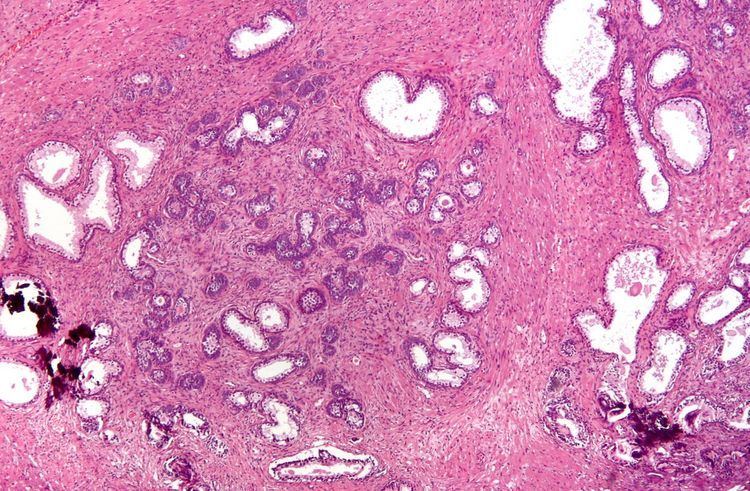ICD-9-CM 60.29 MedlinePlus 002996 | MeSH D020728 | |
 | ||
Transurethral resection of the prostate (commonly known as a TURP, plural TURPs, and rarely as a transurethral prostatic resection, TUPR) is a urological operation. It is used to treat benign prostatic hyperplasia (BPH). As the name indicates, it is performed by visualising the prostate through the urethra and removing tissue by electrocautery or sharp dissection. This is considered the most effective treatment for BPH. This procedure is done with spinal or general anaesthetic. A triple lumen catheter is inserted through the urethra to irrigate and drain the bladder after the surgical procedure is complete. Outcome is considered excellent for 80-90% of BPH patients.
Contents
Indications
BPH is normally initially treated medically. This is done through alpha antagonists such as tamsulosin or 5-alpha-reductase inhibitors such as finasteride and dutasteride. If medical treatment does not reduce a patient's urinary symptoms, a TURP may be considered following a careful examination of the prostate/bladder through a cystoscope. If TURP is contraindicated a urologist may consider a simple prostatectomy, in and out catheters, or a supra-pubic catheter to help a patient void urine effectively. As medical management of BPH improves, the numbers of TURPs have been decreasing.
Risks
Because of bleeding risks associated with the surgery, TURP is not considered safe for many patients with cardiac problems.
Postoperative complications include
Additionally, transurethral resection of the prostate is associated with a low risk of mortality.
